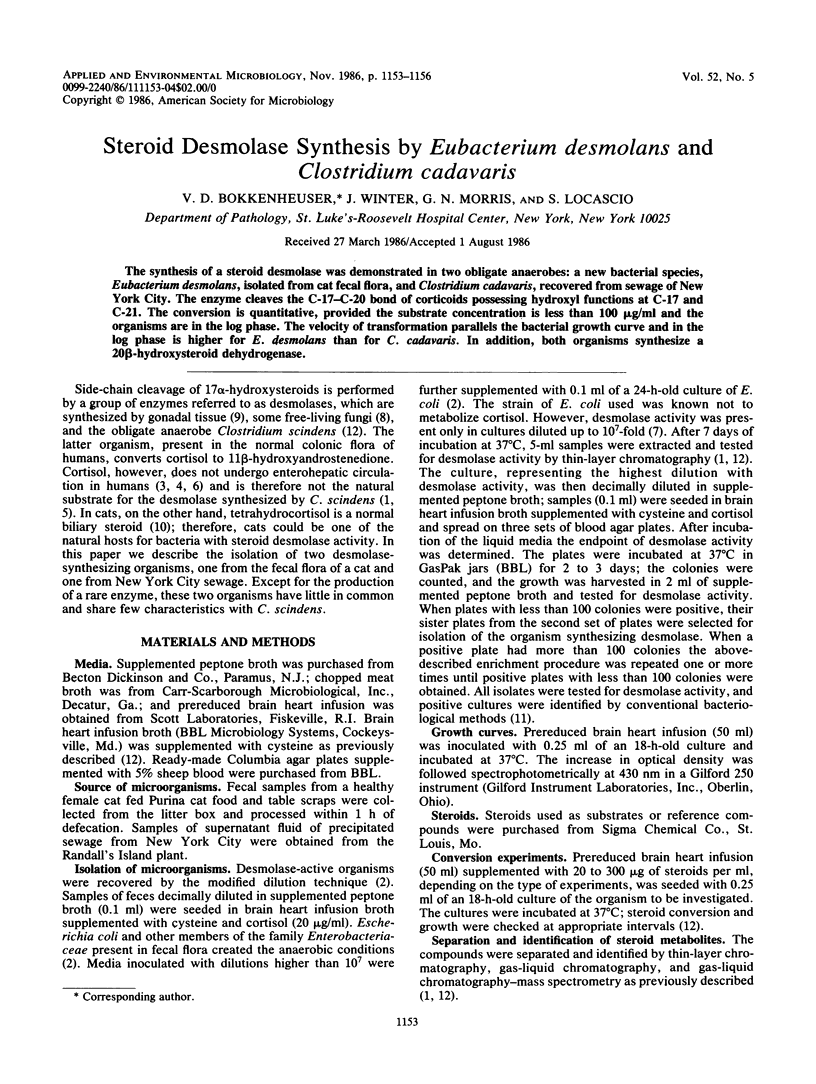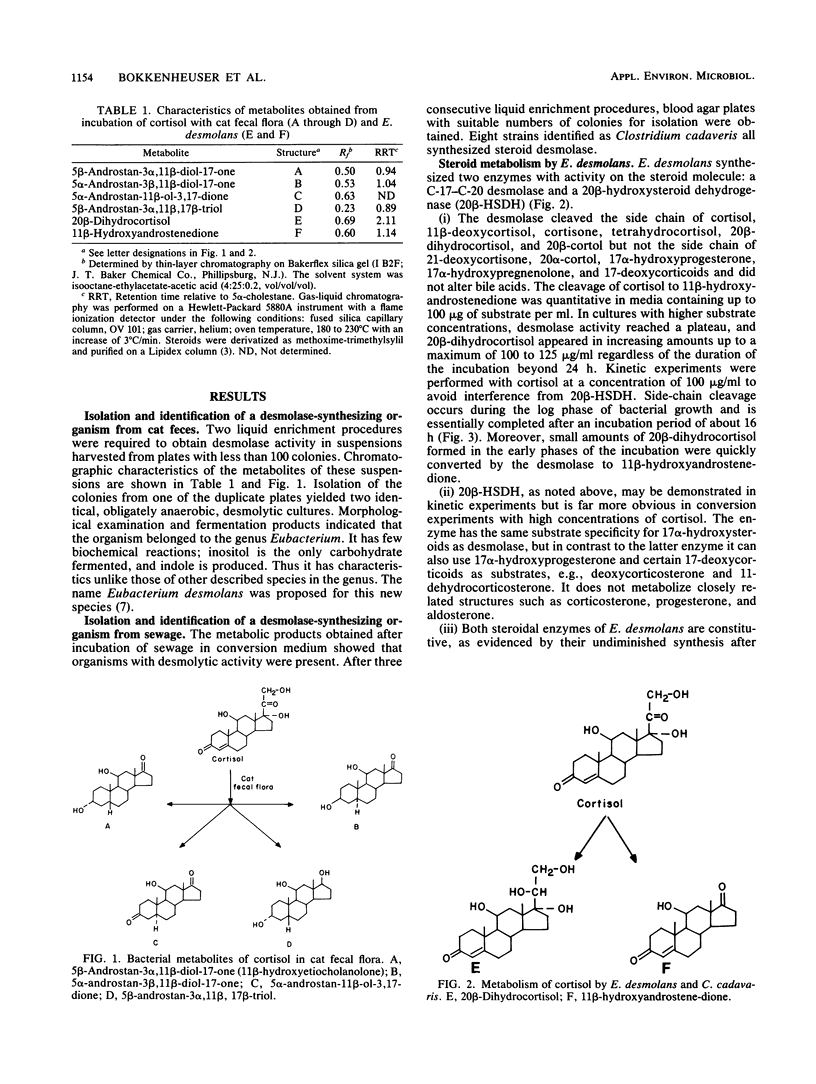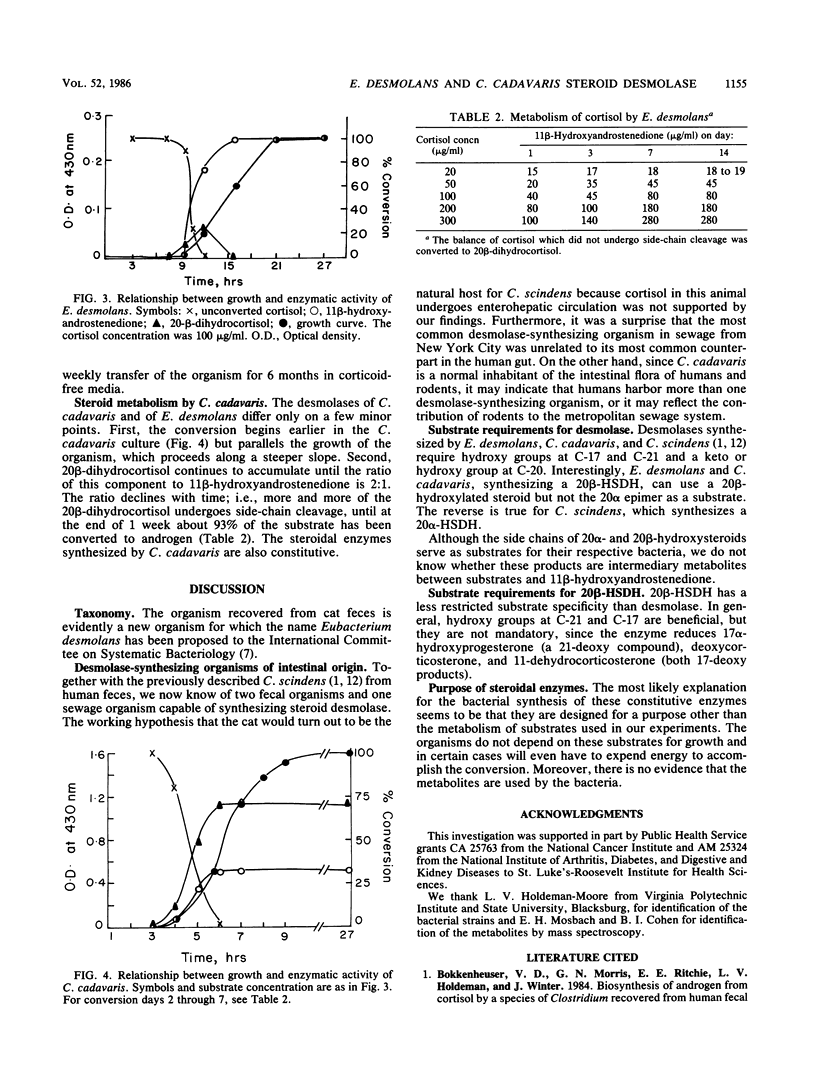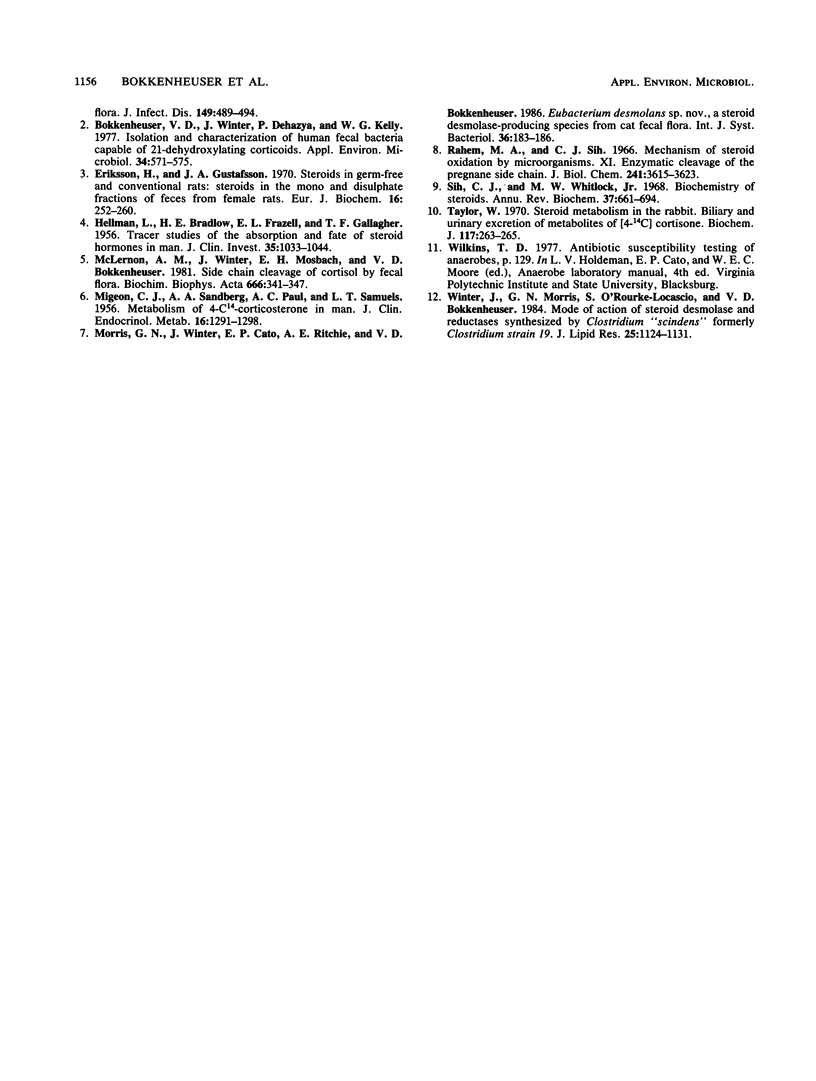Abstract
The synthesis of a steroid desmolase was demonstrated in two obligate anaerobes: a new bacterial species, Eubacterium desmolans, isolated from cat fecal flora, and Clostridium cadavaris, recovered from sewage of New York City. The enzyme cleaves the C-17-C-20 bond of corticoids possessing hydroxyl functions at C-17 and C-21. The conversion is quantitative, provided the substrate concentration is less than 100 micrograms/ml and the organisms are in the log phase. The velocity of transformation parallels the bacterial growth curve and in the log phase is higher for E. desmolans than for C. cadavaris. In addition, both organisms synthesize a 20 beta-hydroxysteroid dehydrogenase.
Full text
PDF



Selected References
These references are in PubMed. This may not be the complete list of references from this article.
- BRADLOW H. L., FRAZELL E. L., GALLAGHER T. F., HELLMAN L. Tracer studies of the absorption and fate of steroid hormones in man. J Clin Invest. 1956 Sep;35(9):1033–1044. doi: 10.1172/JCI103349. [DOI] [PMC free article] [PubMed] [Google Scholar]
- Bokkenheuser V. D., Winter J., Dehazya P., Kelly W. G. Isolation and characterization of human fecal bacteria capable of 21-dehydroxylating corticoids. Appl Environ Microbiol. 1977 Nov;34(5):571–575. doi: 10.1128/aem.34.5.571-575.1977. [DOI] [PMC free article] [PubMed] [Google Scholar]
- Cerone-McLernon A. M., Winter J., Mosbach E. H., Bokkenheuser V. D. Side-chain cleavage of cortisol by fecal flora. Biochim Biophys Acta. 1981 Dec 23;666(3):341–347. doi: 10.1016/0005-2760(81)90292-7. [DOI] [PubMed] [Google Scholar]
- Eriksson H., Gustafsson J. A. Steroids in germfree and conventional rats. Steroids in the mono- and disulphate fractions of faeces from female rats. Eur J Biochem. 1970 Oct;16(2):252–260. doi: 10.1111/j.1432-1033.1970.tb01079.x. [DOI] [PubMed] [Google Scholar]
- MIGEON C. J., PAUL A. C., SAMUELS L. T., SANDBERG A. A. Metabolism of 4-C14-corticosterone in man. J Clin Endocrinol Metab. 1956 Oct;16(10):1291–1298. doi: 10.1210/jcem-16-10-1291. [DOI] [PubMed] [Google Scholar]
- Rahm M. A., Sih C. J. Mechanisms of steroid oxidation by microorganisms. XI. Enzymatic cleavage of the pregnane side chain. J Biol Chem. 1966 Aug 10;241(15):3615–3623. [PubMed] [Google Scholar]
- Sih C. J., Whitlock H. W., Jr Biochemistry of steroids. Annu Rev Biochem. 1968;37:661–694. doi: 10.1146/annurev.bi.37.070168.003305. [DOI] [PubMed] [Google Scholar]
- Taylor W. Steroid metabolism in the rabbit. Biliary and urinary excretion of metabolites of [4-14C] cortisone. Biochem J. 1970 Apr;117(2):263–265. doi: 10.1042/bj1170263. [DOI] [PMC free article] [PubMed] [Google Scholar]
- Winter J., Morris G. N., O'Rourke-Locascio S., Bokkenheuser V. D., Mosbach E. H., Cohen B. I., Hylemon P. B. Mode of action of steroid desmolase and reductases synthesized by Clostridium "scindens" (formerly Clostridium strain 19). J Lipid Res. 1984 Oct;25(10):1124–1131. [PubMed] [Google Scholar]


